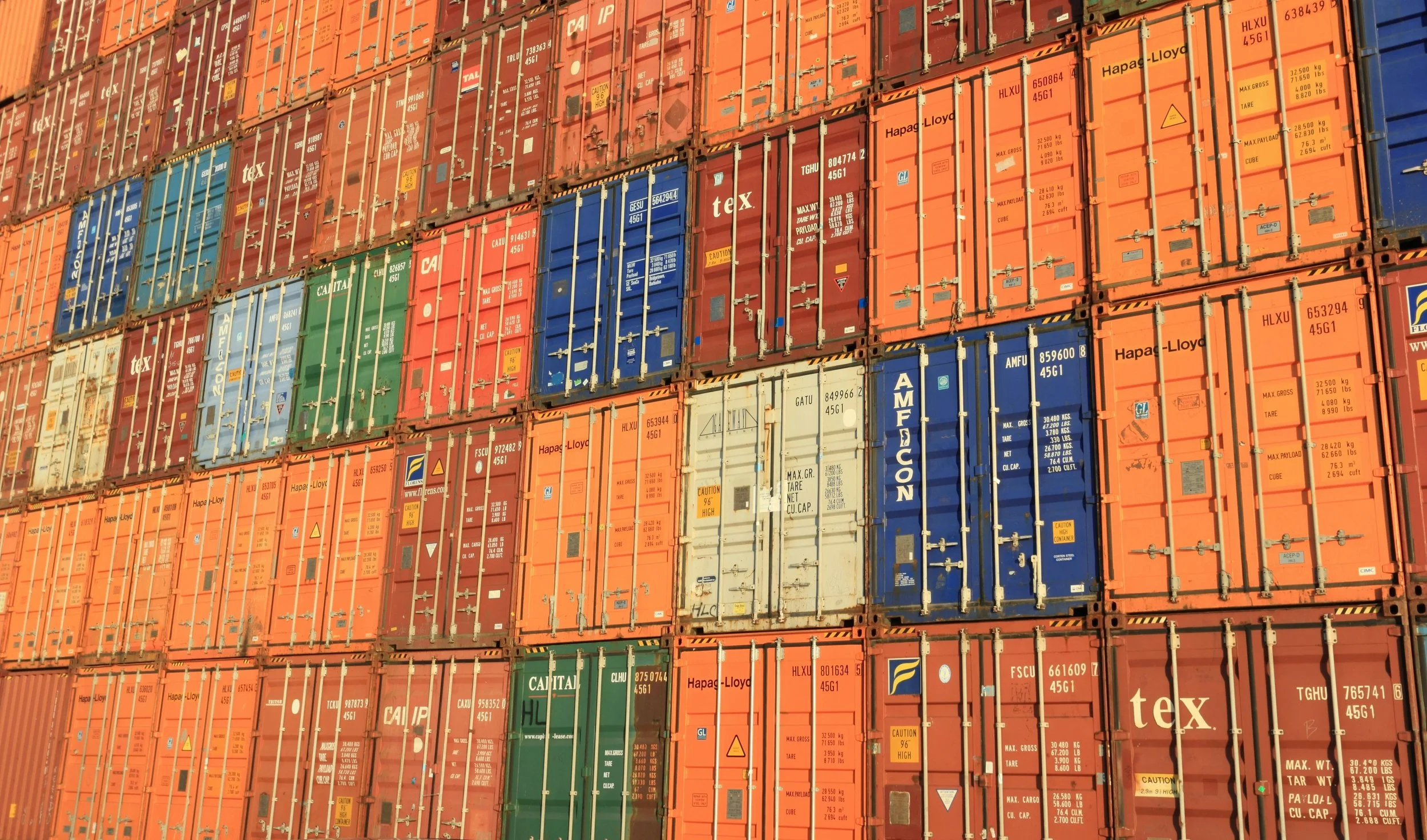Best Practices for Just-In-Time (JIT) Inventory Management
Just-In-Time (JIT) inventory management is a powerful strategy that allows manufacturers to minimize inventory costs while ensuring timely production and delivery. However, poor implementation can lead to stockouts, supply chain delays, and operational disruptions.
For JIT to be effective, companies need precise demand forecasting, reliable suppliers, and seamless logistics. This guide outlines best practices to help businesses successfully implement JIT without increasing risk.
1. Improve Demand Forecasting
The Risk:
JIT only works when demand is accurately predicted. Unreliable forecasts lead to stock shortages and production stoppages.
Solution: AI & Data-Driven Forecasting
• Use historical sales data & predictive analytics to anticipate demand fluctuations.
• Leverage AI-powered ERP systems for real-time demand adjustments.
• Collaborate with customers to gain insights into expected order volumes.
Potential Impact: Reduces stockouts by 30-50%.
2. Strengthen Supplier Relationships
The Risk:
JIT relies on suppliers delivering materials exactly when needed. Unreliable suppliers can cause production delays and lost revenue.
Solution: Develop Strong Supplier Partnerships
• Work with high-performing suppliers who can meet strict JIT deadlines.
• Implement vendor scorecards to track on-time delivery rates.
• Negotiate long-term contracts to ensure priority service and stability.
Potential Impact: Reduces supply chain disruptions by 40%.
3. Optimize Warehouse & Production Layouts
The Risk:
Without an efficient warehouse and production setup, JIT inventory can create bottlenecks in the workflow.
Solution: Improve Internal Logistics & Layouts
• Organize inventory for quick access and minimal movement time.
• Use barcode scanning & RFID technology for accurate stock tracking.
• Adopt kanban systems to signal real-time replenishment needs.
Potential Impact: Increases warehouse efficiency by 20-30%.
4. Implement Real-Time Inventory Tracking
The Risk:
If inventory levels aren’t monitored in real time, companies risk sudden stockouts that halt operations.
Solution: Automate Inventory Management
• Adopt cloud-based ERP systems for real-time stock visibility.
• Use IoT sensors to track stock movement and replenishment.
• Implement automatic reorder alerts to prevent shortages.
Potential Impact: Reduces inventory carrying costs by 15-25%.
5. Establish a Contingency Plan
The Risk:
JIT is vulnerable to supply chain disruptions. Without a backup plan, businesses risk shutdowns due to unexpected delays.
Solution: Build Supply Chain Resilience
• Maintain a small safety stock of critical components.
• Diversify supplier base to reduce dependency on a single source.
• Develop emergency procurement contracts to secure urgent inventory.
Potential Impact: Reduces downtime risk by 50%.
Conclusion
JIT reduces waste, cuts costs, and enhances operational efficiency, but only when executed with precision. Companies that integrate AI-driven forecasting, strong supplier relationships, optimized warehousing, and real-time tracking can successfully implement JIT without increasing risk.
🚀 Want expert guidance on JIT implementation? Let’s talk!
🔗 [Book a free consultation today!]
Top 5 Strategies to Reduce Supply Chain Costs Without Sacrificing Quality
For many manufacturers, supply chain expenses account for 50-70% of total costs. While cost-cutting is essential for profitability, reducing expenses the wrong way can damage quality, disrupt operations, and hurt customer relationships.
This guide outlines five data-driven strategies to reduce supply chain costs while maintaining efficiency and quality.
1. Optimize Freight & Transportation Costs
The Risk:
Rising fuel costs, inefficient shipping routes, and poor carrier selection can lead to excessive freight expenses.
Solution: Route Optimization & Carrier Negotiation
• Use route optimization software to reduce fuel costs and delivery times.
• Consolidate shipments to maximize truckload efficiency.
• Negotiate long-term contracts with multiple carriers for better rates.
Potential Savings: 10-20% reduction in logistics costs.
2. Implement Smart Inventory Management
The Risk:
Poor inventory management leads to high holding costs, excess stock, or stockouts that disrupt production.
Solution: AI-Based Demand Forecasting & Just-In-Time (JIT) Inventory
• AI-driven demand forecasting minimizes stockouts and overstocking.
• JIT inventory strategies reduce warehousing costs.
• Slow-moving stock identification helps free up storage space.
Potential Savings: 15-30% reduction in inventory holding costs.
3. Strengthen Supplier Negotiations
The Risk:
Many companies negotiate based on unit cost alone, missing hidden costs like transportation, lead time, and supplier reliability.
Solution: Total Cost of Ownership (TCO) Approach
• Analyze TCO instead of just price per unit to assess overall supplier impact.
• Consolidate suppliers to increase volume discounts.
• Use vendor scorecards to track performance and negotiate better terms.
Potential Savings: 5-15% cost reduction in procurement.
4. Automate Supply Chain Processes
The Risk:
Manual workflows and outdated systems increase errors, inefficiencies, and labor costs.
Solution: ERP & AI-Powered Process Automation
• Implement ERP software to streamline purchasing, inventory, and logistics.
• Use AI-based analytics to identify inefficiencies.
• Deploy robotic process automation (RPA) for order processing.
Potential Savings: 20-40% improvement in operational efficiency.
5. Adopt a Lean Supply Chain Model
The Risk:
Excess packaging, inefficient warehousing, and redundant transportation routes create avoidable costs.
Solution: Lean & Sustainable Supply Chain Practices
• Reduce excess packaging to lower shipping costs.
• Cross-docking strategies eliminate unnecessary warehousing.
• Partner with local suppliers to decrease lead times.
Potential Savings: 10-25% reduction in overall supply chain costs.
Conclusion
Cutting supply chain costs doesn’t mean sacrificing quality—it means eliminating inefficiencies and leveraging smart technology. By focusing on logistics optimization, supplier management, automation, and inventory control, businesses can reduce expenses while maintaining high performance.
🚀 Want a customized cost-cutting strategy? Let’s talk!
🔗 [Book a free consultation today!]
How to Build a Resilient Supply Chain in Uncertain Times
Supply chain disruptions have become the new normal in today’s global economy. Between geopolitical conflicts, natural disasters, labor shortages, pandemics, and fluctuating raw material prices, manufacturers face constant uncertainty.
For small and medium-sized manufacturers, these disruptions can be devastating—leading to delayed production, missed customer deadlines, increased costs, and lost revenue. However, building a resilient supply chain can mitigate risks, improve efficiency, and create a competitive advantage.
This guide explores key strategies to build a resilient supply chain that helps manufacturers navigate disruptions and thrive in uncertain times.
1. Diversify Your Supplier Base
The Risk:
Relying on a single supplier or sourcing from a single region creates high exposure to disruptions. If that supplier faces delays, your entire production halts.
Solution: Multi-Sourcing & Regional Diversification
• Dual or Multi-Sourcing: Work with multiple suppliers for key components instead of depending on one.
• Nearshoring & Regional Sourcing: Consider shifting part of your supply chain closer to home to reduce transportation delays and geopolitical risks.
• Vendor Risk Assessments: Regularly analyze suppliers based on financial health, geopolitical risk, and past performance.
Real-World Example:
During the COVID-19 pandemic, many manufacturers relying solely on Chinese suppliers faced major shutdowns. Companies that had secondary suppliers in Mexico or the U.S. were able to continue operations with minimal disruption.
2. Improve Supply Chain Visibility with Real-Time Data
The Risk:
Many manufacturers still rely on manual inventory tracking, spreadsheets, and outdated ERP systems—leading to blind spots in their supply chain. Without real-time visibility, they cannot react quickly to supply disruptions, late shipments, or inventory imbalances.
Solution: Digital Transformation & AI-Powered Monitoring
• Implement Real-Time Tracking: Use ERP (SAP, Oracle, Microsoft Dynamics) to track shipments, monitor supplier performance, and get alerts on disruptions.
• IoT & RFID Tracking: Monitor inventory movement, transportation delays, and warehouse efficiency in real time.
• AI-Powered Demand Forecasting: Leverage predictive analytics to adjust order volumes based on market trends and customer demand.
3. Strengthen Supplier Relationships & Collaboration
The Risk:
Many manufacturers treat suppliers as transactional partners, focusing solely on cost savings. In times of disruption, suppliers prioritize their strongest relationships first—leaving weaker partnerships to suffer delays.
Solution: Build Long-Term, Strategic Supplier Relationships
• Shift from Transactional to Strategic Partnerships: Work closely with key suppliers to develop contingency plans and ensure priority service in times of crisis.
• Quarterly Supplier Performance Reviews: Regularly assess suppliers based on on-time deliveries, quality consistency, and financial health.
• Data Sharing & Collaborative Planning: Share demand forecasts and inventory levels with suppliers to help them plan ahead.
Real-World Example:
Toyota’s supply chain was disrupted by the 2011 earthquake in Japan, but because of its strong supplier relationships, it was able to secure critical parts faster than competitors and resume production quickly.
4. Implement Smart Inventory Buffer Strategies
The Risk:
Many companies operate on Just-in-Time (JIT) inventory systems to reduce costs. However, in times of unexpected disruptions, low inventory levels can shut down production entirely.
Solution: Hybrid Inventory Models (JIT + Safety Stock)
• Identify Critical Components: For high-risk parts, maintain a safety stock buffer to handle sudden demand spikes.
• Leverage AI & Predictive Analytics: Forecast optimal safety stock levels to avoid excessive inventory costs.
• Re-evaluate Inventory Turnover: Some parts may require longer holding periods based on supplier risk.
Real-World Example:
During the semiconductor shortage, companies that had backup inventory were able to continue production while competitors faced months-long delays.
5. Develop a Flexible & Agile Logistics Strategy
The Risk:
Many manufacturers rely on one transportation method (e.g., shipping by sea). When port congestion, strikes, or fuel price increases occur, their entire logistics system is disrupted.
Solution: Multi-Modal Logistics & 3PL Partnerships
• Diversify Transportation Modes: Use a mix of air, rail, trucking, and ocean freight to adapt quickly when one mode is disrupted.
• Work with Multiple Carriers & 3PLs: Partnering with different freight providers gives you alternative shipping routes when disruptions occur.
• Nearshoring Warehouses: Keep regional distribution centers to shorten last-mile delivery times and minimize risk.
Final Thoughts: Why Resilience Matters
Resilient supply chains are not just about surviving disruptions—they provide a competitive advantage. Manufacturers that invest in visibility, supplier diversification, inventory buffers, and flexible logistics can:
• Maintain operations while competitors struggle.
• Reduce long-term costs by avoiding emergency procurement.
• Improve customer relationships by delivering consistently, even in times of crisis.
🚀 Want to improve your supply chain resilience? Let’s talk!



